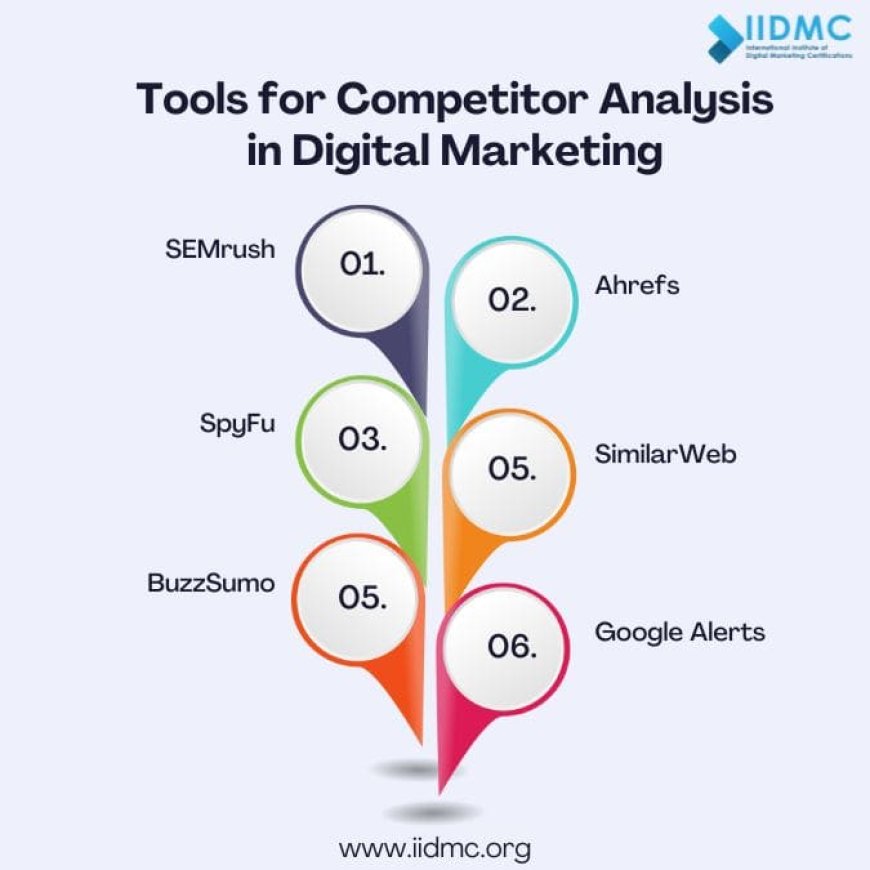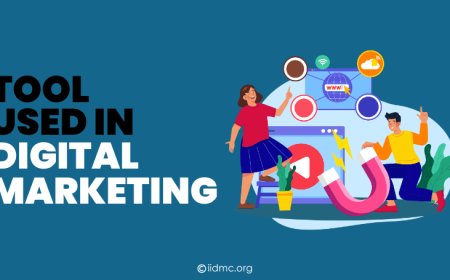Competitor Analysis in Digital Marketing
Unlock the secrets of competitor analysis in digital marketing. Learn how to analyze your competitors to improve your strategy and stay ahead online.

In today's highly competitive digital market, identifying your competitors is critical to success. Competitor analysis in digital marketing is investigating and assessing your competitors' methods, strengths, and shortcomings to uncover areas for growth and differentiation.
Competitor Analysis in Digital Marketing is the process of collecting and analyzing competitor data to guide your own strategic choices is known as competitor analysis. Examining the online presence, marketing plans, and customer engagement techniques of rivals is part of this process in the context of digital marketing. You may improve your marketing efforts to stand out in the crowded digital marketplace by learning what your competitors are doing effectively and where they might be lacking.
Finding out who your competitors are is the first step in the Competitor Analysis in the Digital Marketing process. These could be direct rivals with comparable goods or services or indirect rivals with distinct goods and services that might be aimed at the same market. It's critical to evaluate your rivals' advantages and disadvantages after you've determined who they are to understand their standing in the market.
Key Steps in Competitor Analysis in Digital Marketing
Competitor analysis in digital marketing is crucial for developing a successful strategy and gaining an edge over rivals. Below are the key steps involved in conducting an effective competitor analysis:
-
Identify Competitors: To begin, determine both direct and indirect competitors. Whereas indirect competitors could operate in related industries or offer alternatives, direct competitors supply goods and services that are identical to those of your target market. Make a thorough list by using industry reports, search engines, and consumer reviews.
-
Website audit: Analyze your competitors' websites to determine their design, user experience, navigation, content, and functionality. Check for mobile responsiveness, loading speed, and any distinctive features or selling factors. Take note of their SEO methods, such as keywords, meta descriptions, and site structure.
-
SEO Analysis: Learn more about your competitors' search engine optimization (SEO) strategies. Review their keyword rankings, backlink profiles, domain authority, and content strategy. Tools such as Ahrefs and SEMrush can give you insights into their top-performing pages and linked domains, allowing you to fine-tune your SEO strategy.
-
Content Marketing Strategy: Evaluate your competitors' content marketing strategies. Blog entries, videos, infographics, and other sorts of information are all included. Analyze frequency, tone, themes, and engagement indicators like social shares and comments. Identify any holes or possibilities in their material that you can fill or enhance.
-
Social Media Marketing Presence: To develop an effective social media marketing strategy, it's crucial to analyze the online presence of your competitors. Take a comprehensive look at their Facebook, Twitter, Instagram, LinkedIn, and TikTok profiles. Evaluate the types of content they share, their engagement rates, and the size of their follower base. By understanding their preferred platforms and audience interaction strategies, you can tailor your own social media marketing plan for maximum impact and relevance in your industry.
-
Paid Advertising: Analyze your competitors' paid advertising campaigns on platforms such as Google Ads, Facebook Ads, and others. Examine the types of advertising they run, the keywords they target, the ad copy, the images, and the landing pages. SpyFu and Adbeat are two tools that can help you track your competitors' sponsored advertising and gain insight into their strategy.
-
Email Marketing: Sign up for your competitors' emails to analyze their email marketing efforts. Examine their frequency, content, design, subject lines, and call-to-action tactics. This can spark ideas for boosting your email marketing initiatives.
-
Strategy Implementation: Based on your research, create a digital marketing strategy that capitalizes on your competitors' shortcomings and exploits opportunities. To obtain a competitive advantage, you may need to refine your content, SEO, social media, or paid advertising methods.
-
Monitor and Adjust: Conducting competitor analysis is not a one-time exercise. Continuously monitor your competitors' digital marketing activity and make changes to your approach as appropriate. To stay ahead in the digital economy, regularly examine their strengths, weaknesses, and possibilities, and adapt your approach.
Tools for Competitor Analysis
-
SEMrush: SEMrush is a complete digital marketing toolbox that includes elements such as organic research, advertising research, backlink analysis, and more. It delivers valuable information about your competitors' organic and paid search strategies, such as keyword rankings, ad expenditure, and traffic sources.
-
Ahrefs: Ahrefs is a comprehensive SEO toolkit that lets you analyze your competitor's backlink profiles, keyword rankings, and content strategy. Site Explorer and Content Explorer allow you to discover top-performing material in your niche and locate link-building opportunities.
-
SpyFu: SpyFu specializes in competitive intelligence for pay-per-click (PPC) advertising. It enables you to monitor your competitors' AdWords campaigns, keywords, ad wording, and ad expenditure. Analyzing your competitors' PPC methods will help you adjust your campaigns for better results.
-
SimilarWeb: SimilarWeb analyzes website traffic and audience behaviour, allowing you to compare your site's performance to that of competitors. It provides statistics on traffic sources, referral sites, audience demographics, and engagement metrics, allowing you to better understand where your competitor's traffic is coming from and how they are engaging their audience.
-
BuzzSumo: BuzzSumo is a content research tool that can help you find trending topics, identify top-performing content, and monitor social media interaction. Analyzing your competitors' content strategies and social media presence can inspire your content creation efforts while also identifying possibilities to engage with your target audience.
-
Google Alerts: Google Alerts is a free application that lets you track mentions of your competition on the internet. Setting up alerts for your competitor's brand names, keywords, or industry terms allows you to stay up to date on their newest news, product releases, and marketing activities in real time.

Why Competitor Analysis Matters?
Identify Strengths and Weaknesses: Analyzing your competition allows you to understand their strengths and weaknesses in comparison to your firm, allowing you to profit from their vulnerabilities while strengthening your own.
Spot Opportunities: By monitoring your competitors' activity, you can uncover market gaps or areas where they are underperforming, allowing you to fill the space and acquire a competitive advantage.
Refine Your Strategy: Using insights from the competitor analysis, you may improve your digital marketing plan to better position your brand, target the correct audience, and optimize your marketing efforts.
Competitor analysis is an important part of any effective digital marketing plan. Understanding your competitors' plans, strengths, and shortcomings allows you to uncover areas for growth, differentiation, and optimization. Businesses may use competitor analysis findings to enhance their marketing activities, keep ahead of the competition, and generate long-term success in the digital marketplace.





























